Supermicro Ultra SYS-120U-TNR Review: Testing Dual 10nm Ice Lake Xeon in 1U
by Dr. Ian Cutress on July 22, 2021 9:00 AM ESTBIOS, Software, BMC
The networked management for the Supermicro SYS-120U-TNR uses the latest interface from Supermicro through the ASpeed AST2600 which is given an IP my DHCP upon connection. Interestingly enough trying to access the interface did not work with Chrome at all - after logging in it would just freeze on the system page while trying to get basic system details. In the end I had to use non-Chromium based Edge. On top of that both Chrome and Edge warned that the certificate for the BMC webpage was invalid, resulting in jumping through a hoop to access it.
The username and password to access the system are no longer the default admin/admin or admin/password: due to the 2018 law in California known as SB-327, all IoT devices (including servers) that have administrator access to settings and configurations must have unique passwords. The username for us was still ADMIN however the password was found on a pull-out tab on the front of the server - or alternatively just on the inside of the double width PCIe slot inside the chassis.
The Supermicro interface is as detailed as a management interface needs to be, with this main dashboard showcasing firmware versions, power consumption, the remote console, and recent system messages and actions.
The System tab states a lot of similar information to the dashboard, with links to the separate component detection of the server.
The CPUs are both detected here, and although it says they have with a base frequency of 2.00 GHz (actually 2.6 GHz) and a turbo frequency of 4.5 GHz (actually 3.1 GHz), we actually measure the correct numbers in the operating system.
All sixteen memory modules are detected, with ECC enabled, for a total of 512 GB.
Power supplies as well – in this image we only have one of the 1200W models connected to the mains, but even without it will still showcase the thermal sensor on the power supply not connected.
In our system, the sensor module didn’t seem to read anything from the hardware, however we did run the fans at full speed regardless.
Updating the BMC or BIOS is relatively easy through the update interface when you have a file to hand. The system also keeps track of when it was updated and with what version firmware.
For remote control, both HTML5 and Java are supported, however we could not get the HTML 5 interface to work during our testing. Java worked well, and is likely kept here for the specific reason of legacy and fallback support despite Java not being recommended.
Overall the management options were as standard as we normally expect from this sort of system. On the plus side it looks a lot nicer than some of the base AMI / older interfaces we still encounter from time to time, but on the minus side I’m still unsure why it wouldn’t work in Chrome.
BIOS
On the BIOS/UEFI side of the equation, we get a simple blue and grey interface from AMI which runs as standard on enterprise systems. The X12DPU-6 motherboard we are using has BIOS version 1.0b and a total of 512 GB of memory detected.
In the Advanced CPU section, it showcases that we have two Xeon Gold 6330 processors, with the D1 stepping. Similar to the BMC, it says here a 2.0 GHz base frequency (Intel’s official specifications state 2.5 GHz) but everything else looks in order. Individual cores can be disabled with the bitmaps as shown here:
One of the new features of the Xeon Gold processors is SGX enclaves, which require TME to be enabled.
In the PCIe section, Above 4G Decoding was enabled by default (often disabled by default on consumer platforms), and the system allows a selection of NVMe firmware such that it can be software driven rather than vendor firmware driven.
For the uncore / mesh sub-system, we can see that this system is configured to 11.2 GT/s speed UPI links (one of the upgrades over previous generation), but there are also a number of options here that could affect the system based on use case. Customers can select the system to prioritize topologically at the expense of feature performance (e.g. cores over IO), or vice versa. Similarly a user can select SNC2 (Sub-NUMA Clustering) to partition the processor into two hemispheres for lower latency memory accesses at the expense of immediate bandwidth. There is also an option to throttle cache snooping to manage power based on what sort of workloads the system would end up running.
All the NVMe slots in the front panel of the system can be PCIe 4.0 x4 enabled, and there’s an option to check that here as well.
Other options in the BIOS include IMPI network settings, event logs, and traditional BIOS security.


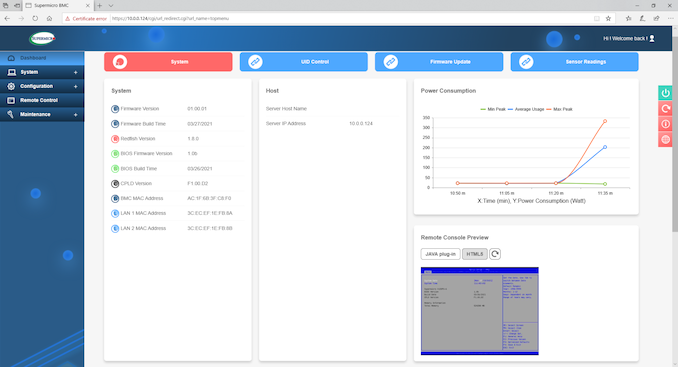
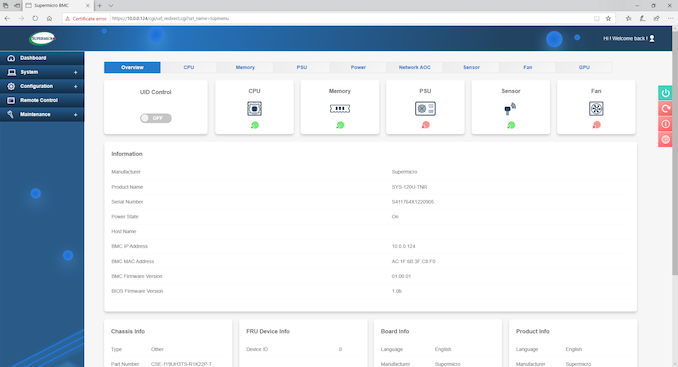

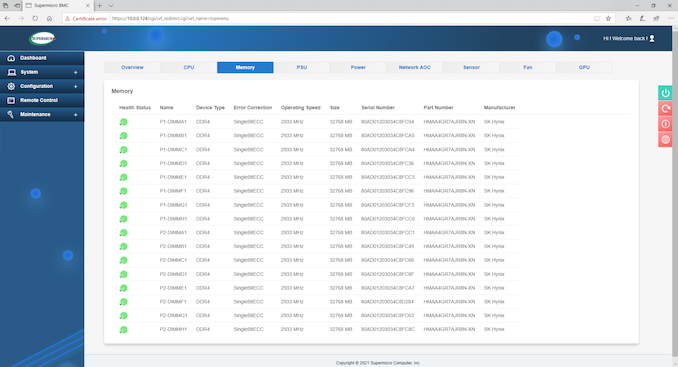

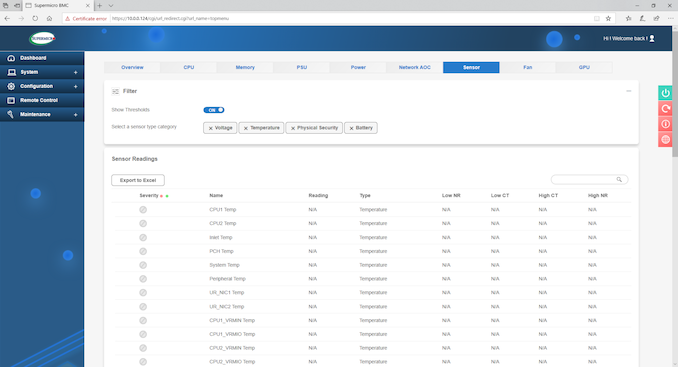
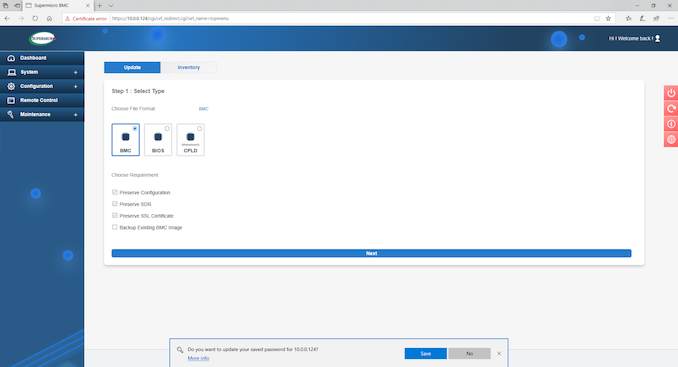

 Power_thumb.png)
 Main_thumb.png)
 System_thumb.png)
 CPU_thumb.png)
 Memory_thumb.png)
 PSU_thumb.png)
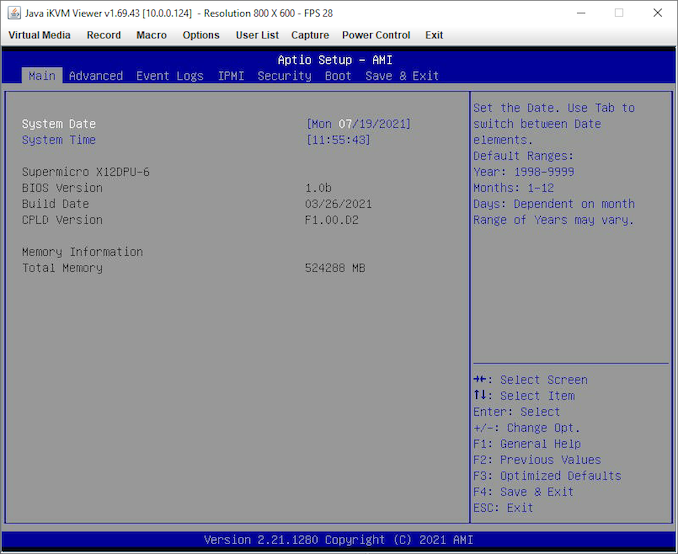
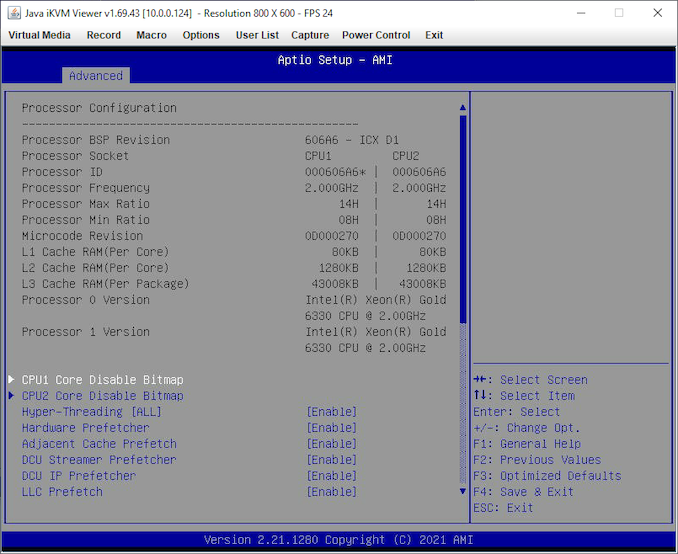
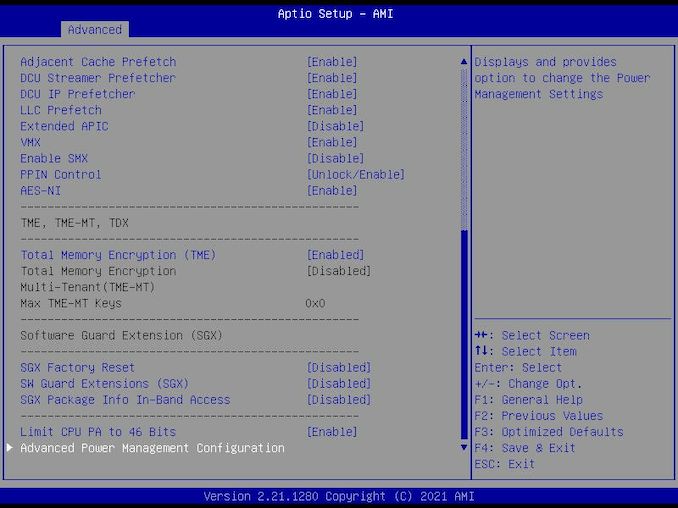
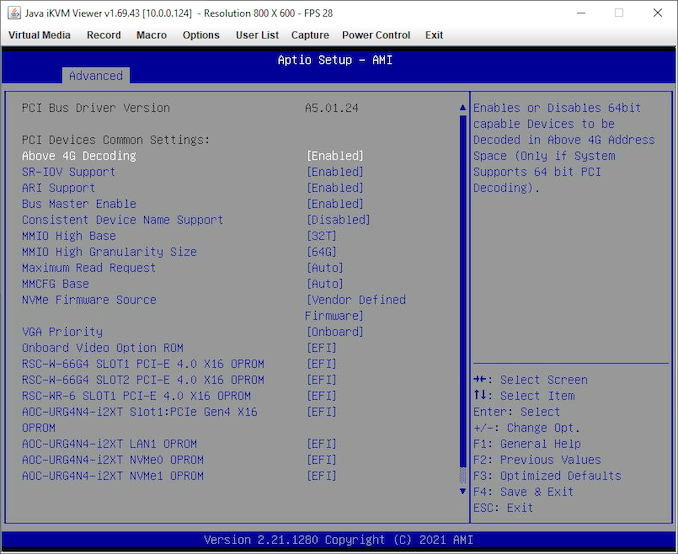
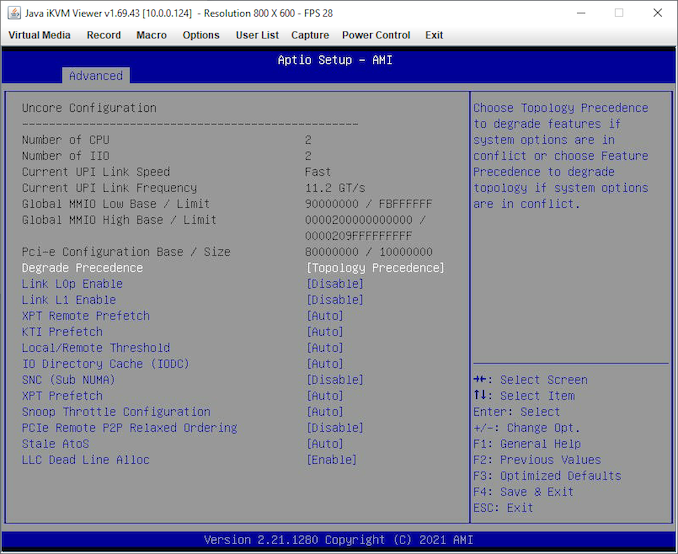
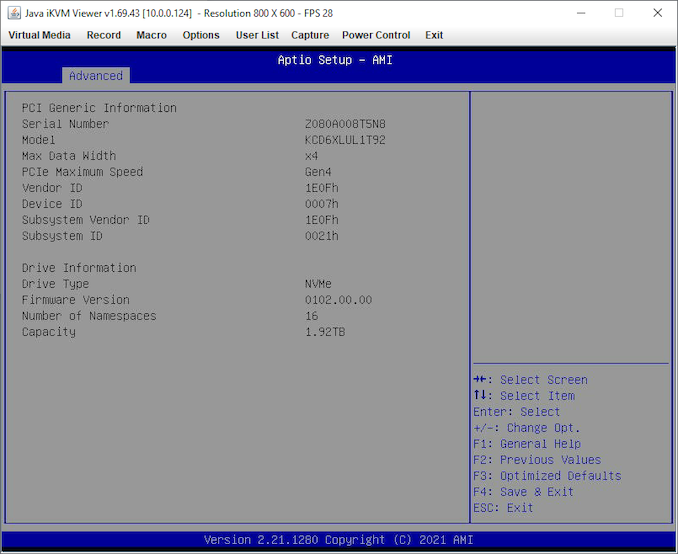
 - Main_thumb.png)
 - Advanced_thumb.png)
 - Boot Feature_thumb.png)
 - CPU1_thumb.png)
 - CPU2_thumb.png)
 - PCIe_thumb.png)








53 Comments
View All Comments
hetzbh - Thursday, July 22, 2021 - link
So ... 70% of the sales win are due to AVX 512? Better hope that Intel finds another strategy as AMD EPYC Genoa adds AVX 512 support as well..Kamen Rider Blade - Thursday, July 22, 2021 - link
I concur, don't forget that they're getting Stacked L3 3D V-Cache.The Vorlon - Saturday, July 24, 2021 - link
Zen with 3D cache vs Saphire Rapids with HBM should be interesting.Early returns from Adler Lake (same Golden Cove core as Saphire) suggests intel will have a +/- 25% IPC lead, but AMD will retain a large power consumption advantage - it is hard to project how much of this IPC intel will need to give back to keep reasonable thermals. HBM should outperform 3D cache by a good margin, but given what we (think) we know about yields AMD may still have a lead in core counts...
Fun times ahead!
Jorgp2 - Thursday, July 22, 2021 - link
Lol, no.mode_13h - Thursday, July 22, 2021 - link
I wonder how much of this is customers simply buying into the performance story of AVX-512 and purchasing the promise vs. actually having AVX-512 workloads where it proves worthwhile.zepi - Thursday, July 22, 2021 - link
There are multiple reasons to buy Intel.One often critical one is availability / lead time. Second one is that some software is not supported on AMD or you need to pay additional HW validation bills and subject yourself to intricate details of tuning your network stack / firmwares / network cards and whatnot when you run a bit more special software.
mode_13h - Thursday, July 22, 2021 - link
> There are multiple reasons to buy Intel.Sure, but I'm not asking about that. I'm asking about the specific claim quoted in the article and mentioned by @hetzbh.
edzieba - Thursday, July 22, 2021 - link
"I wonder how much of this is customers simply buying into the performance story of AVX-512 and purchasing the promise vs. actually having AVX-512 workloads where it proves worthwhile."Very little: in this realm you don't buy hardware based on specs and review benchmarks, you have samples in house running your ACTUAL workload to determine real performance before rolling it out at scale.
mode_13h - Thursday, July 22, 2021 - link
And you know this from experience, or are you just speculating? And if the former, were you on the sales side or a volume purchaser?domih - Thursday, July 22, 2021 - link
I know that by experience. I spent two months testing 3 different racks of 20 units (two major brands and a "no brand" OEM) to advise a large purchasing customer on which ones to select. The final advice is not reduced to a Yes or No but rather the pros and cons of each system. The best benchmark results are not the only factor, software compatibility, manuals, professional services, training programs, existing relations with vendor, other support and pricing (final deal) count a lot too. In the end, using a comprehensive check list, you may select not the fastest system or even a system that has bugs (but with workarounds) due to significant difference in pricing or other arrangements. Utterly different from the DYI market. Analog: if you're going to buy 100 x 18-wheel trucks, you're going to spend quite some time evaluating the possible candidates and it will take time. Utterly different than going to a car dealer and buy a car on the spot.